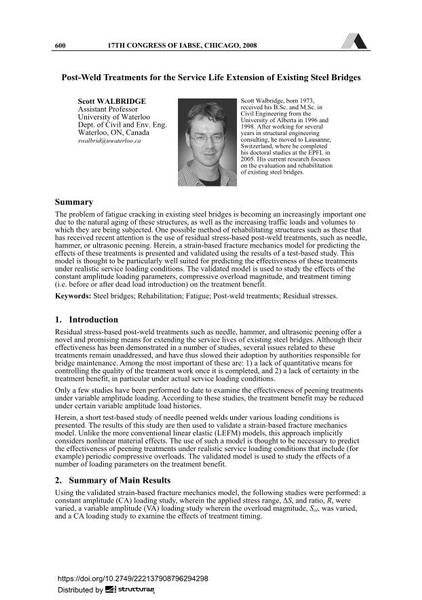Post-Weld Treatments for the Service Life Extension of Existing Steel Bridges

|
|
|||||||||||
Bibliographic Details
| Author(s): |
Scott Walbridge
|
||||
|---|---|---|---|---|---|
| Medium: | conference paper | ||||
| Language(s): | English | ||||
| Conference: | 17th IABSE Congress: Creating and Renewing Urban Structures – Tall Buildings, Bridges and Infrastructure, Chicago, USA, 17-19 September 2008 | ||||
| Published in: | IABSE Congress Chicago 2008 | ||||
|
|||||
| Page(s): | 600-601 | ||||
| Total no. of pages: | 8 | ||||
| Year: | 2008 | ||||
| DOI: | 10.2749/222137908796294298 | ||||
| Abstract: |
The problem of fatigue cracking in existing steel bridges is becoming an increasingly important one due to the natural aging of these structures, as well as the increasing traffic loads and volumes to which they are being subjected. One possible method of rehabilitating structures such as these that has received recent attention is the use of residual stress-based post-weld treatments, such as needle, hammer, or ultrasonic peening. Herein, a strain-based fracture mechanics model for predicting the effects of these treatments is presented and validated using the results of a test-based study. This model is thought to be particularly well suited for predicting the effectiveness of these treatments under realistic service loading conditions. The validated model is used to study the effects of the constant amplitude loading parameters, compressive overload magnitude, and treatment timing (i.e. before or after dead load introduction) on the treatment benefit. |
||||
| Keywords: |
fatigue steel bridges rehabilitation residual stresses Post-weld treatments
|
||||
